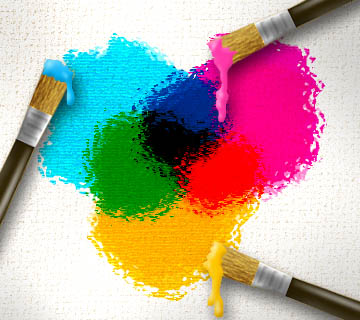Additive and subtractive colour model
There are a few colour models used to define colours. The two most important ones here are: RGB and CMY. The RGB colour model is an additive model, which means that we can achieve white colour by increasing the values of its three "ingredients" (Red, Green and Blue) - that is exactly how computer monitors work and how our eyes perceive them.

RGB describes well colours produced by mixing lights.
On the other hand, the CMY (or CMYK) model is a subtractive one. In this case going towards white colour means decreasing values of each colour (Cyan, Magenta and Yellow, sometimes backed up by BlacK to increase intensity). It is a good model to descript the light reflected by an object, rather than emitted, as it was the case with the RGB model. This model is used widely to describe colours in print. Since web pages are mostly viewed on our screens and rarely printed out, we will discuss only the first model: RGB.

CMY (or CMYK) describes colours reflected by paint
(mainly in print).
Using RGB colour model
To represent any colour using RGB colour model we have to assign three values to three primary colours, which added up will give us the colour that we need. And so it is easy to define red, green or blue colour. Even the white colour is not a problem, if we remember, that white light is just a mix of all other colours - we simply assign highest possible values to all three "ingredients". Black colour is another one easy to achieve - we pull all three colour values back to zero and there it is. As we can guess, grey colour will be something between white and black (we can get it if we set up all the values at say, 50%).
However, colours like violet, yellow or pink might seem a bit more tricky. We will discuss them on the next page.